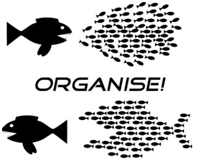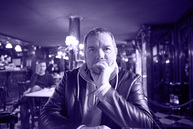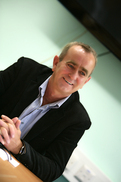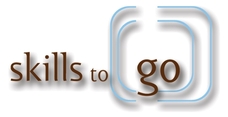 How to achieve more by doing less? Part 2 – ORGANISATION Now that you’ve started planning the way you work you need to ORGANISE the way you work too in order to maximise the effect. Working in an organised way allows you to PLAN you activities efficiently and coordinate all the tasks that have to be completed in an effective way. Here are some simple ideas to help you become more organised: ORGANISE YOUR WORK SPACE Make sure that you’re working environment is tidy and organised. Put everything in its place and it will be easier to find what you need and what you need to do. Get in the habit of putting things back where they belong as soon as you’ve finished with them. THINK ON PAPER OR IN WORD DOCUMENT so that you have a reference point, you can avoid duplicating work and it makes it easier to review and revise your work. Save all of your work as what’s not used might be relevant for something else. CREATE TEMPLATES for repetitive tasks - letters, emails, invoices etc., so that you only have to fill in the relevant details each time rather than create a completely new version. When ever possible paper, files, correspondence etc., should only be handled ONCE. Make a decision about what to do and do it. PRACTICE THE 4Ds: Delete probably half your correspondence can be deleted straight away Do if it's urgent or can be completed quickly Delegate if it can be better dealt with by someone else Defer set aside time at a later date to spend time on items requiring long action Then there’s the question of whether to use a TO DO LIST or an ORGANISER/PLANNER. A ‘To Do List’ is just a list of everything that you have to do. By writing everything down in one place you make sure that you don’t forget anything. Tasks can be ticked off when completed and more can be added as and when required. An Organiser lists all your appointmnts and keeps track of your schedule. My preference is to use my CALENDER/ORGANISER as my TO DO LIST because this allows me not only to list all the things that need to be done but I can allocate an amount of time to each task. It’s much easier to fit my work in around appointments and meetings because at one glance I can see my full schedule and this means that I’m able to organise and plan my time more efficently. The system automatically reminds me when tasks are due to commence and as an added bonus I can share my calender if required. The thing that’s important is to find something that works for you and that you will use consistently. If you work in an organised way it means that you are aware of everything that needs to be done; that you’ve planned how to get everything done; that you have a consistent approach to your work; that you are not needlessly duplicating work and you have a realistic understanding of what you can achieve with your time. The result of better organisation is increased efficiency, better use of time and improved quality of life.
0 Comments
Commissioning Photography - The Brief!
It sounds a little bit over the top to talk about "the brief" where you are only considering commissioning a couple of pictures, but It is a really useful habit and one you should really try to get into. What is a brief? At it's simplest is just the agreement between you and the photographer about what you want to achieve from the photo shoot. Any professional photographer will be well versed in the concept and in fact will welcome it. It's just about discussing with your photographer how you see the final images or video footage looking and a clear understanding of what it's going to be used for. If you have never done one before then don't worry - a professional photographer will be quite comfortable with helping you decide what it is and giving guidance as to what you can achieve within your budget. It doesn't have to written down but it doesn't hurt to keep a record.The real advantages of agreeing the brief with your photographer are
David Broadbent is a professional photographer with over 30 years of editorial experience now represented worldwide by the Alamy picture agency. As well as fully equipped location work, David also runs Summerhouse Studio, an informal small studio ideal for stills and video of people PR and products, from his home in the Forest of Dean. To see more of David’s work visit www.davidbroadbent.com or his folios on LinkedIn, Tumblr, Pinterest, Twitter and Facebook. Or to actually talk to another human call him on 07771 664973. Be yourself and enjoy what you do!
People often make comments to me about being cheerful at work, to which I always reply.....”I spend too much time at work to be miserable while I’m there”. Think about one for a minute. We spend roughly one third of our lives sleeping and one third of it at work, leaving one third for everything else......how much actual leisure time we get is quite minimal really. I think maybe the old beliefs of ...”oh no it’s Monday again” and “Thank god it’s the weekend” are still heavily ingrained in us and that’s a result of previous generation thinking . Let’s be clear.....Fun isn’t just for the weekend, everyday should be fun, including when you are at work. Then of course it doesn’t even feel like work, and a Monday morning can feel as good as any day of the week. Sure we all get bad days, but generally work should be a pleasant experience. My point is, if you don’t enjoy your work, then maybe you’re either in the wrong job or you need to change your thinking or attitude towards it. The alternative is to spend approximately one third of your life just ‘working’  How to achieve more by doing less? Part 1 - PLANNING One of the first things to realise is that it doesn’t matter how many “Time Management” articles you read or how many “Time Management” tips you adopt you will never manage time. However, you can learn how to manage your time more effectively and efficiently: you can control how much time you spend on certain tasks; you can control the amount of work you have to do and by working smarter you can achieve more by doing less. One change that’s easy to make and will have a big impact on how effectively you use your time it to THINK about and PLAN what you’re going to do and how you’re going to do it before taking action. In other words don’t tackle a job without a plan of attack. Here are some easy ways to start planning the way you work: PLAN YOUR DAY - at the beginning of each working day rather than diving in head first to all the work you have to do, take a few minutes to think about what needs to be done and what you need to achieve that day. Once you have a clearer picture of what your goals are for the day, you can plan how you will accomplish them - at the end of each day take a few minutes to review your progress. Any outstanding tasks can be added to the schedule for the following day. WHEN PLANNING YOUR DAY - think about which parts of the day you are at your most productive and creative and plan accordingly. This is when you should be doing your high-value, high-quality work - plan low-energy work (like returning phone calls, responding to emails) for those less industrious times - be realistic when planning the time allowed for each task - make sure you allow time for breaks, travel time etc - don’t plan work for every minute of the day as you need to allow a significant amount of time for “the unexpected” - plan meetings for early in the day because time leading up to them is often wasted - if you have an important phone call to make, an email to write, or a meeting take a few minutes to plan what you want to say, what you want to achieve and what your desired outcome is PLAN AHEAD Use the same principles when planning ahead. At the beginning of each week, month, quarter etc., think about all the work that has to be done so that you can plan and schedule work in advance. Make sure activities are scheduled in a timely fashion. It’s always better to finish work earlier than required than scrambling to finish everything at the last minute PLANNING is so important because it puts you in control of the work that you do and you will as a result accomplish more. Working proactively is much more effective and less stressful than working reactively and not only will your time efficiency improve but you will appear more prepared and professional. Have you got the success habit?
What brings some people success, and others not? I can't promise to have the answer to this, but I may have some clues. My work as a business trainer and coach has given me the opportunity to work with hundreds and hundreds of people from different walks of life over the past 16 years, and I've been able to observe the habits of those who are achieving 'success' in their lives, and those who would say that others are feeling denied the success that they feel they deserve. Here are my observations. 1. People who achieve success get up when they don't feel like it, and exercise when there are a multitude of excuses for not bothering. The same mentality that motivates people to do things that they could otherwise avoid, seems to drive behaviours that manoeuvre them towards their goals and success. 2. People who achieve success know what they want. They have their vision of success clear; they know what success looks like, feels like, sounds like, smells like! You don't hear them saying things like 'but I don't know what I want...'. 3. People who achieve success make it their job to achieve it. They don't wait for opportunities, they seek them out. They don't blame others for their 'bad luck', they take responsibility for making their own luck. 4. People who achieve success are often (but not always, I admit) very good communicators. They know the questions to ask and when to listen more than they speak. They know that good relationships will help them on their journey, and they form strong and loyal bonds. 5. People who achieve success step out of their comfort zone to try new things, meet new people and take on challenges. Their focus on 'success' seems to strengthen their resolve and gives them the guts to face things that others would do their best to avoid. So - do you agree? Which of these traits do you have and are there any more that you would add to this list? |
Categories
All
CAP BUSINESS CLUBS BLOG
Archives
December 2018
Visit us on Facebook - We always appreciate any "Likes"
Contact us
T: 01594 723120 M: 07811 981929 Email: Here Office 3 The Main Place Old Station Way Coleford, Glos GL16 8RH |











 RSS Feed
RSS Feed


